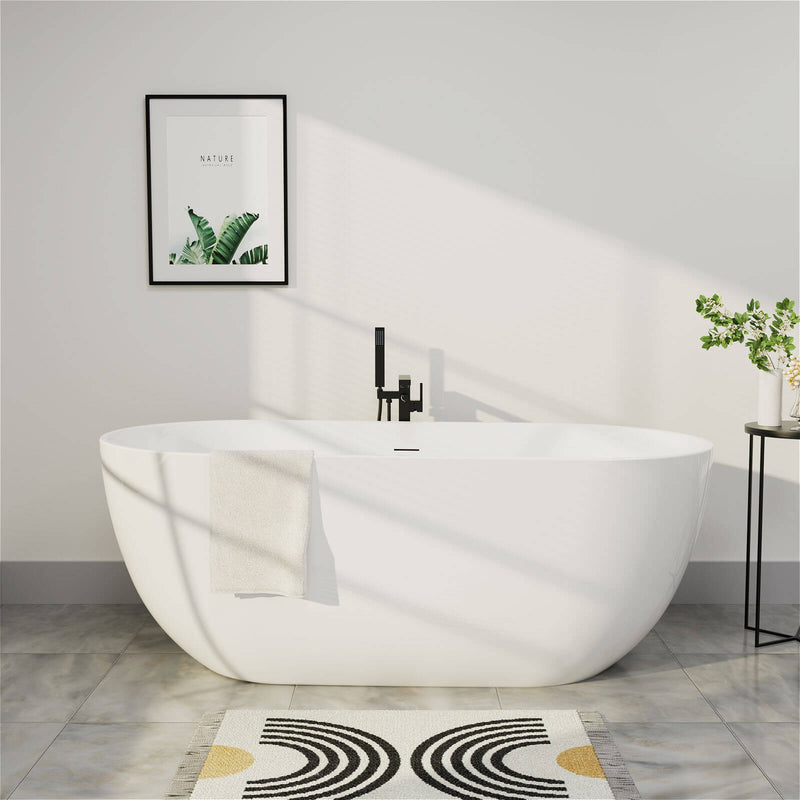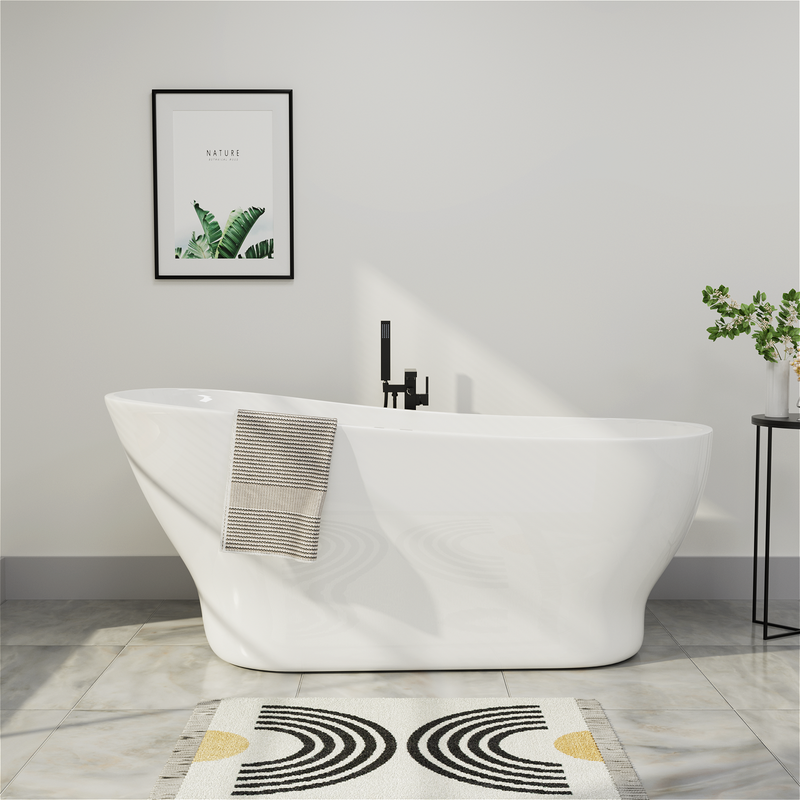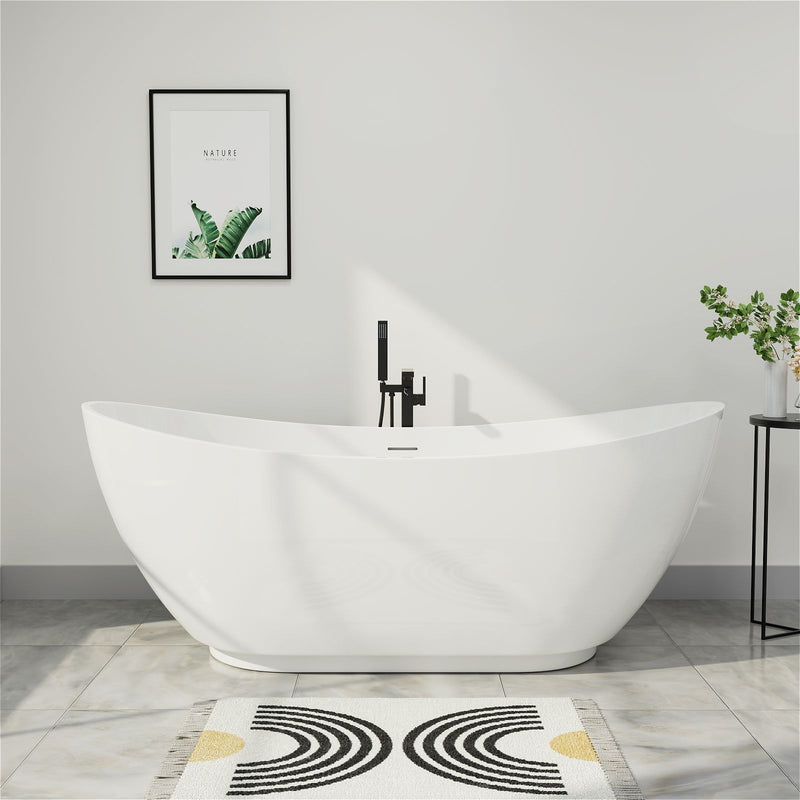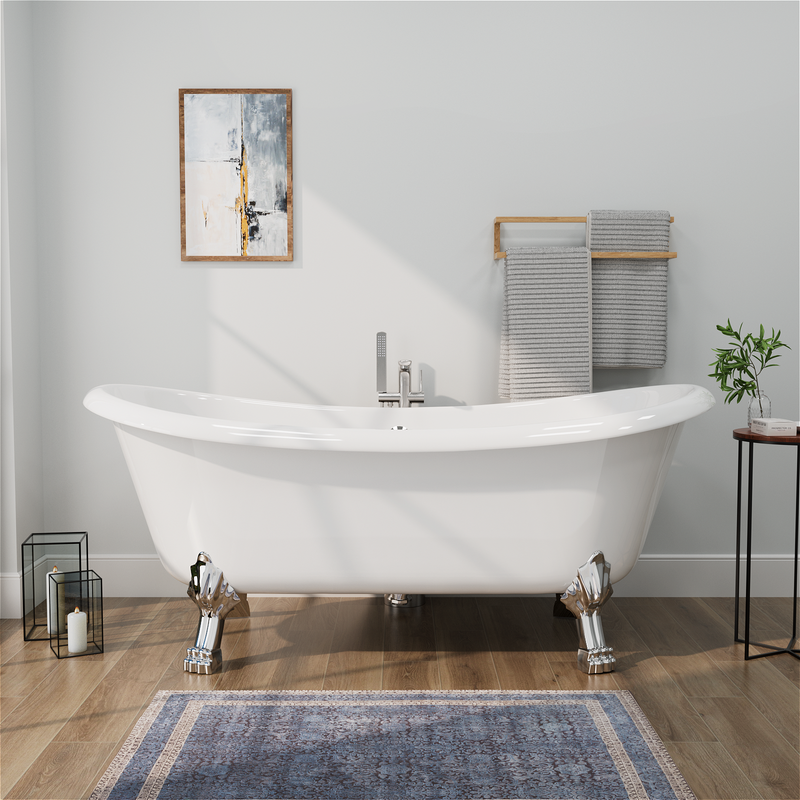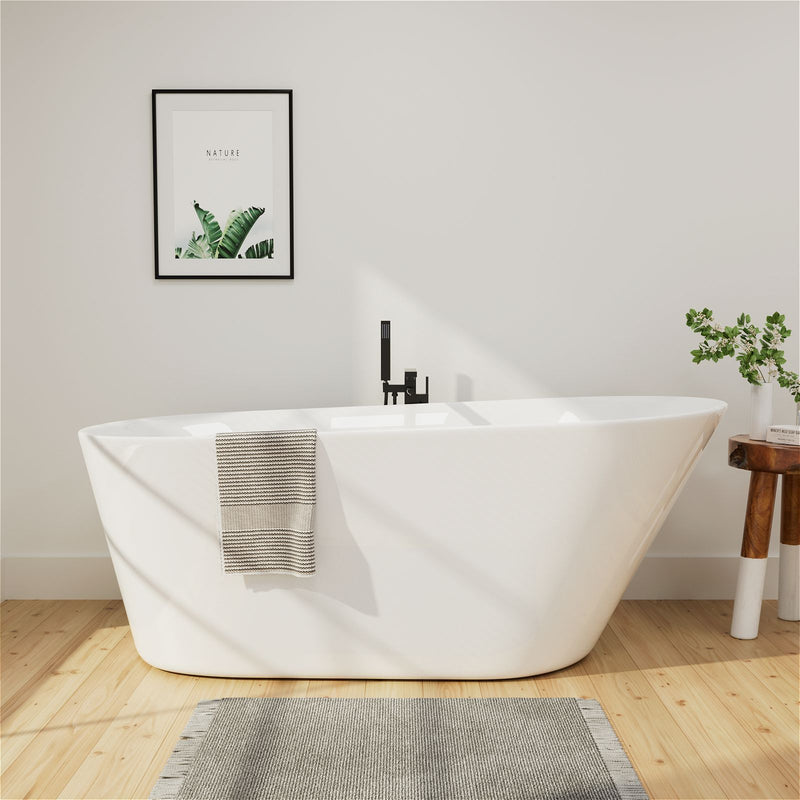When choosing a bathtub, depth is often the most underestimated factor. Standard-depth bathtubs meet basic bathing needs, while deep-soaking bathtubs, with their higher water levels, appeal to those seeking immersive relaxation. However, does deeper bathtubs necessarily mean more comfort? The answer is not absolute. Bathtub depth directly impacts body support, thermal coverage, entry and exit safety, and spatial perception. Understanding the core differences between the two, combined with your own physical condition and bathing habits, can help you find the ideal depth that truly suits you.
Based on ergonomic principles and actual user experience, this article systematically compares deep-soaking and standard-depth bathtubs from three perspectives: immersion and support, suitability and safety, and space and energy consumption impact, to help you make the right choice.
Core Experience Comparison: Immersion and Body Support
The most direct impact of bathtub depth is the water level, which in turn determines the extent of body coverage and support provided by the water.
Deep Soaking Bathtub (Water Level > Shoulders)
Full Immersion Experience
- Deep Coverage for Shoulders and Neck: When the water level reaches above the collarbone or even below the chin, the shoulder and neck muscles are completely immersed in warm water, achieving a full-body, wrap-around relaxation experience. This significantly relieves tension and soreness in the upper back, shoulders, and neck.
- Increased Buoyancy: Deep water provides greater buoyancy, effectively reducing pressure on the hips and tailbone. For those with lumbar discomfort or those who sit for long periods of time, this feeling of weightlessness can significantly relieve localized pressure.
- Heat Retention: More water means greater heat capacity, resulting in a slower drop in water temperature, extending comfortable soaking time.
Support
- Back Support Depends on Design: Depth alone does not directly provide back support. If the bathtub walls are poorly angled (too vertical), the body can easily slide downward in deep water, requiring the user to actively maintain their posture or rely on an additional headrest.
- Limited Leg Freedom: To achieve a high water level, deep soaking tubs are typically narrow in width or short in length. Taller individuals may find it difficult to fully straighten their legs, requiring them to bend or raise their knees, which can affect their sense of relaxation.
Standard Bathtub (Water Level ≈ Waist to Chest)
Primarily for Localized Relaxation
- Core coverage: The water level typically ranges from the waist (sitting) to the lower chest (half-reclining). While it effectively warms the abdomen and relieves fatigue in the lower limbs, it lacks coverage for the shoulders and neck, requiring a shower or a warm compress with a wet towel.
- Greater freedom of movement: The lower water level allows for unrestricted arm and shoulder movement, making it convenient for washing, reading, or operating electronic devices.
Supportive Features
- Easier back fit: The inclination of the standard bathtub's interior generally better aligns with the body's natural sitting/half-reclining curve, providing stable back support and preventing slippage, making it ideal for extended periods of reclining and relaxation.
- More comfortable leg extension: Standard bathtubs of the same length are often wider, perhaps due to their lower water level requirements, providing more legroom, making them particularly suitable for taller individuals.
Conclusion
For those seeking full-body coverage, ultimate buoyancy relief, and long-term warmth retention, and who don't mind potentially limited legroom, a deep soaking tub is the preferred choice.
For those prioritizing back stability, upper limb freedom of movement, and legroom, a standard tub is more suitable.
Suitable Audience and Safety Considerations
Physical conditions and family structure have a decisive influence on the depth of the tub.
Suitability and Risks of a Deep Soaking Tub
Advantages
- Those with shoulder, neck, and back pain: Deep water coverage is particularly effective in relieving upper body muscle tension, frozen shoulder, and other conditions.
- Those experiencing high stress and seeking deep relaxation: Complete immersion can help relieve stress and aid sleep.
- Those of average height or below: They can better adapt to the interior space of a deep soaking tub and avoid excessive leg curling.
Safety Hazards and Limitations
- Increased Entry and Exit Difficulty: Higher tub walls (usually over 50 cm) and deeper water levels pose obstacles and safety risks for those with mobility issues, the elderly, and children. Sturdy handrails are essential.
- Drowning Risk for Children: Deep water is extremely dangerous for infants and young children. Even brief periods of unattended use can result in accidents. Families with young children should exercise extreme caution.
- Cardiovascular Stress: Prolonged immersion in hot water increases cardiac stress. Patients with cardiovascular disease or those with infirmities should strictly control water temperature and soaking time.
- Increased Risk of Slips: The deep water and relatively confined space within the bathtub increase the risk of slipping or dizziness when rising.
Suitability and Safety of Standard Bathtubs
Advantages
- Large Families: This bathtub offers increased safety and is suitable for families with elderly and children. Children can use it safely under adult supervision.
- Mobility Impaired: The lower bathtub walls (typically 40-45 cm) and shallower water level significantly reduce entry and exit difficulties and the risk of slips.
- Taller: This bathtub generally provides greater legroom.
- Quick Bathtub Entrance: This bathtub fills quickly, making it suitable for efficient daily cleansing.
Comfort Limitations
- This bathtub does not provide the full-body, buoyant feeling and buoyant relief characteristic of a deep soaking bathtub.
- Additional measures are needed to keep the upper body (especially the shoulders and neck) warm.
Conclusion
When safety is a primary concern (for example, when there are elderly people, children, or those with limited mobility), a standard bathtub is a safer choice. Deep soaking bathtubs require a rigorous assessment of the user's physical condition and enhanced protective measures.
Single adults, families without young children, and those seeking ultimate relaxation can choose a deep soaking bathtub with caution, but they must ensure that the bathroom is equipped with effective anti-slip measures and safety grab bars.
Space Usage and Cost
The depth of the bathtub affects both space efficiency and long-term cost.
Space Requirements Comparison
External Footprint: Length and width are primarily determined by the design, while depth itself has little impact on external footprint. Freestanding deep soaking bathtubs may appear larger due to their higher walls.
Internal Space Experience
- Deep soaking bathtubs: To achieve a high water level, internal length or width are often sacrificed. This can cause the user to feel cramped, especially in small bathrooms.
- Standard bathtubs: The interior space is generally more open, with less visual oppression, making them more suitable for smaller bathrooms.
Installation Compatibility
- A built-in deep soaking tub requires a deeper countertop or wall recess, which may increase installation complexity.
- Standard bathtubs have relatively standard installation requirements.
Water Usage and Energy Consumption
Water Filling Volume Varies Significantly
Deep soaking tubs typically have a volume 40%-70% or more larger than standard bathtubs of the same length and width. For example, a standard 1.7m tub requires approximately 150-180 liters of water, while a deep soaking tub of the same size may require 250-350 liters.
Direct Cost Impact
- Increased Water Bills: Each fill consumes more water, leading to higher long-term costs in areas with higher water prices.
- Double Heating Energy Consumption: Heating a larger volume of water requires more electricity or gas, especially in winter, and also increases heating time.
- Drainage Burden: A large amount of hot water is instantly discharged into the sewer, placing a greater instantaneous load on pipes (this is a concern for older pipes).
- Environmental Considerations: Higher water and energy consumption translates to higher carbon emissions.
Conclusion
A standard bathtub is the preferred choice for small bathrooms, reducing the feeling of space congestion. If energy and water conservation and cost control are key, standard bathtubs offer significant advantages. Deep soak bathtubs are more suitable for those who can afford higher utility bills and infrequent use.
Decision Guide: How to Choose the Best Depth for You
Based on the above factors, follow these steps to identify your ideal bathtub:
Core Needs Self-Assessment
What do you value most?
- Ultimate relaxation, deep full-body soaking, relief of shoulder, neck, and back pain → Prefer a deep soak bathtub
- Safety, convenience, family-friendly, spacious → Prefer a standard bathtub
- Economic and energy-saving, fast daily use → Prefer a standard bathtub
Physical Condition and Family Assessment
If the primary user is 175cm or taller, choose a deep soak bathtub carefully (pay attention to the inside length and width).
Are there:
- Children under 6 years old? → Standard soak bathtub is highly recommended
- Elderly over 65 or those with mobility issues? → Standard soak bathtub is highly recommended
- Anyone with severe lumbar or cardiovascular disease? → Consult a doctor; a deep soak bathtub may not be suitable.
Space and Cost Assessment
- Is the bathroom small? Yes → Prefer a standard soak bathtub to reduce the feeling of oppression.
- Are you concerned about significantly increased utility bills? Yes → Prioritize a standard bathtub.
Final Recommendation
- Go for a standard bathtub: Suitable for families (especially those with children), those with limited space, budget-conscious individuals, and those prioritizing safety and energy efficiency.
- Consider a deep soaking bathtub: Suitable for those living alone or with an adult couple, those without children, those with significant neck, shoulder, or back pain, those seeking a spa-like experience, those who can afford higher utility bills, and those with ample bathroom space and adequate safety features (grab bars and non-slip mats).
Conclusion: Depth aligns with needs, not numbers.
The debate over bathtub depth is essentially a trade-off between different comfort levels and usage scenarios. Deep bathtubs offer the ultimate in immersion and buoyancy, but at the expense of space, safety, and cost. Standard bathtubs excel in universal accessibility, safety, and affordability, but compromise on full-body relaxation.
Key Decision Points:
- Immersion and Support: Deep bathtubs offer full-body coverage, while standard bathtubs offer excellent support and mobility.
- Safety and Target Audience: Standard bathtubs are universally safe, while deep bathtubs require user assessment and enhanced safety features.
- Space and Energy Consumption: Standard bathtubs save space, water, and money.
There's no absolute superiority or inferiority, only the most suitable. By clarifying your core needs (relaxation goals, user requirements, and space budget), you can break through the myths of depth and find the optimal water level for true relaxation. When the warm water perfectly embraces every inch of your body, that's the perfect confirmation that you've chosen the right depth.

